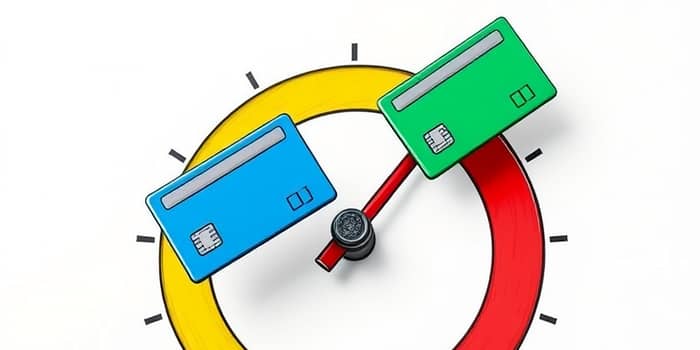
Your credit utilization rate can feel like an invisible barometer, quietly influencing your financial reputation and opportunities. By learning to master this simple ratio, you can unlock better loan terms, reduced interest rates, and a stronger sense of control over your financial future. In this article, we’ll explore definitions, calculations, best practices, and actionable strategies to help you maintain a healthy credit profile.
Credit utilization rate is the percentage of your available revolving credit that you are currently using. It applies specifically to accounts such as credit cards, personal lines of credit, and home equity lines of credit (HELOC), but not to installment loans like mortgages or student loans. Credit bureaus view this ratio as a reflection of your spending habits and overall risk profile.
Thinking of your utilization as the proportion of your credit limit being used, a lower percentage signals responsible borrowing behavior, while a higher percentage may raise concerns for future lenders.
To calculate your utilization, use this simple formula:
Total outstanding balances ÷ Total credit limits × 100%
For example, if you have two credit cards with combined limits of $3,000 and combined balances of $750, your calculation would be 750 ÷ 3,000 × 100% = 25%. You can calculate this figure per account or across all cards to get your overall utilization rate.
Credit utilization is typically the second most important factor in credit scoring models, accounting for around 30% of your FICO score. Payment history holds the top spot at 35%, but utilization remains a critical gauge of your risk to potential lenders.
High utilization—generally above 30%—can signal to creditors that you might be overextended, potentially lowering your score. Conversely, a lower rate can improve your creditworthiness, helping you qualify for favorable interest rates, higher credit limits, and attractive loan offers.
Experts and credit bureaus suggest maintaining your utilization below certain thresholds to optimize your score:
Even small credit limits can push you into dangerous territory if balances rise unchecked. Consider this quick reference table:
Managing your utilization effectively requires a combination of smart habits and regular monitoring. Try implementing these proven techniques:
While it might seem beneficial to carry no balance at all, a 0% utilization rate does not necessarily boost your score beyond rates under 10%. In fact, inactive accounts risk closure by issuers, which can reduce your total credit limit and inadvertently raise your utilization on other cards.
Using credit responsibly and paying off balances in full each month strikes the right balance between activity and prudence.
Several myths surround credit utilization, leading consumers to make misguided decisions:
Myth: Paying your balance in full prevents any utilization.
Truth: Scoring models often use the balance reported on your statement closing date. If that balance is high before you make your payment, your score may still reflect a higher utilization.
Myth: Closing an old credit card improves your profile.
Truth: Closing cards reduces your total available credit, which can spike your overall utilization rate and lower your score.
Understanding and managing your credit utilization rate is both an art and a science. It requires awareness of your balances, strategic use of credit lines, and consistent monitoring to ensure you stay within optimal thresholds.
By keeping your utilization below thirty percent consistently, paying off balances in full, and maintaining open lines of credit, you empower yourself to achieve the best possible credit score. That strong score becomes your ticket to financial freedom—lower interest rates, bigger credit lines, and the confidence to pursue life’s ambitions without unnecessary stress.
At its core, credit utilization is more than just a number. It’s a reflection of your financial discipline and planning. By embracing the insights shared here, you can transform what might feel like an opaque calculation into a clear, actionable path toward better credit health. Start today by checking your current utilization, setting realistic targets, and implementing one new habit this week. Your future self will thank you for taking these small but powerful steps.
References













